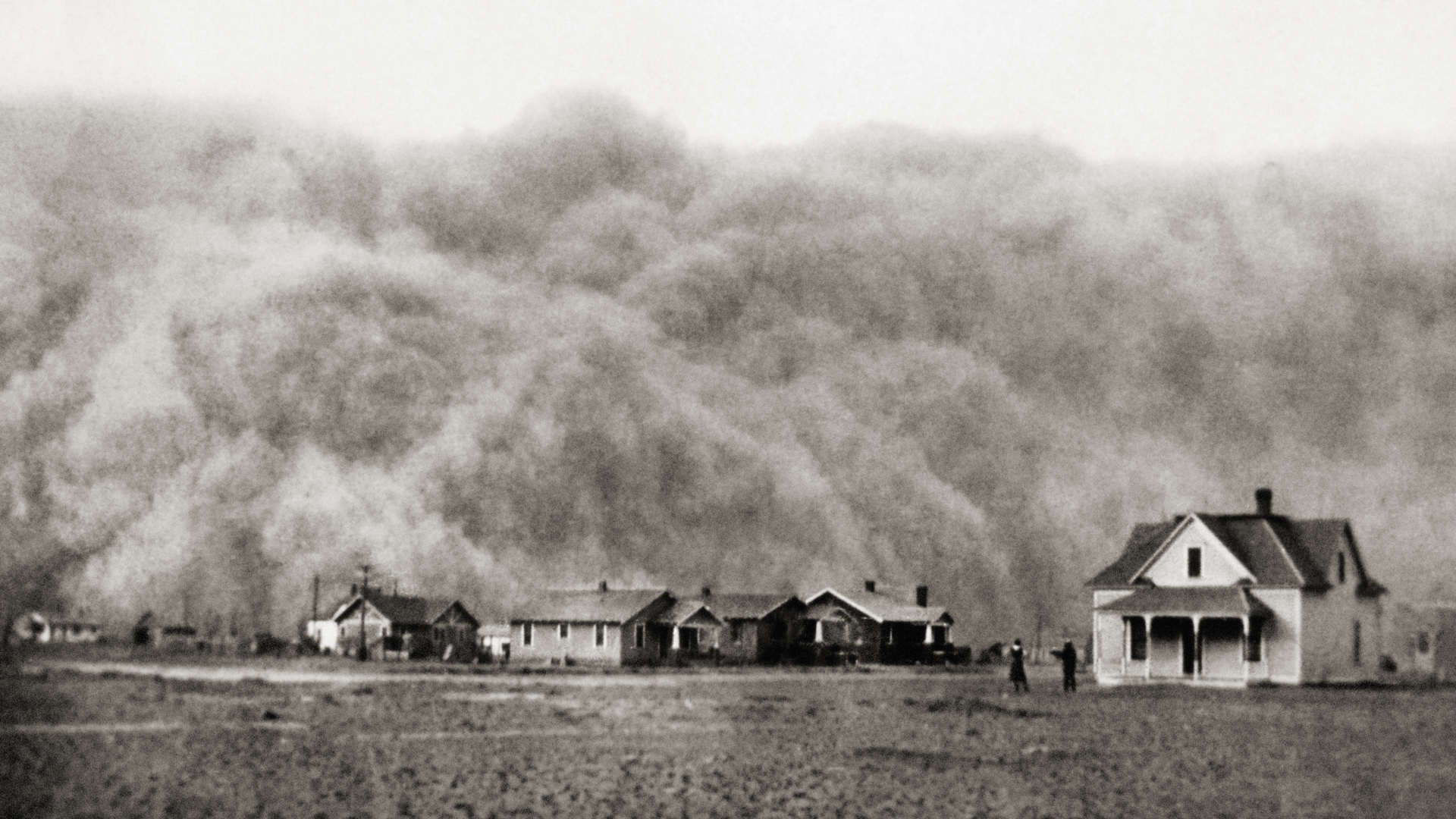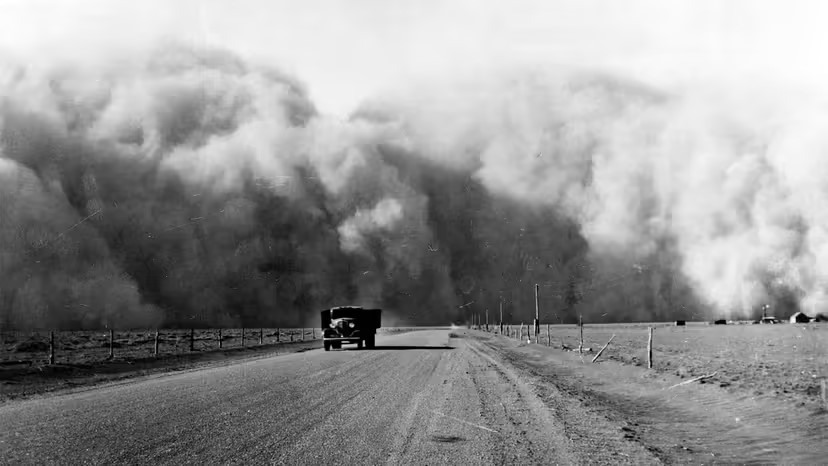The Dust Bowl and the Price of Plowed Dreams

The Dust Bowl wasn’t just the worst environmental disaster in U.S. history, it was a wake-up call.
The Dive
In the late 1800s, the federal government enticed settlers westward with land giveaways like the Homestead Act. Millions of acres of native prairie grass were plowed under to plant wheat and corn. The idea? America could feed itself by farming the frontier.
By the 1920s, new gas-powered tractors accelerated that mission. Wheat prices soared during WWI, and farmers, incentivized by subsidies and market demands, expanded operations without understanding the fragile ecology of the Great Plains.
Then came the crash. Wheat prices collapsed. And in 1931, so did the rain. A brutal, multi-year drought hit the southern plains. Without deep-rooted grasses to hold the soil, the land dried up, cracked open—and blew away.
On May 11, 1934, a black wall of dust rose thousands of feet into the sky and blew 2,000 miles east. It blanketed D.C., New York, even ships at sea. It was the most powerful dust storm in U.S. history, and a symbol of just how broken things had become.
Over the next few years, ‘black blizzards’ became routine. Crops died. Livestock suffocated. Children developed dust pneumonia. And over 2.5 million people fled their homes, many heading west to California in search of work and dignity.
President Franklin D. Roosevelt’s New Deal responded with programs like the Soil Conservation Service and the Prairie States Forestry Project. Farmers were taught crop rotation, no-till methods, and tree planting. These helped, but they didn’t undo the damage. By the time rains returned in 1939, 850 million tons of topsoil had been lost.
The Dust Bowl was a catastrophe caused not just by nature, but by human arrogance. It showed that short-term growth without ecological respect can become long-term disaster. And it taught us that ‘progress’ has to partner with stewardship, or everyone pays the price.
Why It Matters
The Dust Bowl wasn’t just a storm—it was a reckoning. It revealed the cracks in our agricultural system, the danger of ignoring ecological limits, and the resilience of people forced to start over. If you want to understand how human ambition and environmental balance collide, start here.
?
What farming practices contributed to the Dust Bowl—and how were they changed afterward?
How did the Dust Bowl impact migration patterns and demographics in the U.S.?
What role did federal policy play in both causing and responding to the disaster?
What lessons can we learn from the Dust Bowl today about climate change and sustainability?
Why do you think some people stayed during the Dust Bowl while others left?
Dig Deeper
On May 11, 1934, a dust storm blowing from the Great Plains blanketed much of the nation's Mid-Atlantic region due to decades of poor farming practices and chronic drought conditions.
Learn how President Franklin Roosevelt responded to one of the worst man-made environmental disasters in American history--the Dust Bowl.
Related

The New Deal: Fighting Depression with Bold Ideas
Faced with economic collapse, President Franklin D. Roosevelt launched a revolutionary plan to rebuild America from the ground up. The New Deal wasn’t just policy—it was a bold experiment in hope, action, and government responsibility.

U.S. Geography: How the Land Shaped a Nation
Before the United States was born, geography shaped how people lived, worked, and fought over this land. From the Appalachian Mountains to the Great Plains, the natural landscape influenced settlement, culture, and history.

The Great Depression: America in Crisis
The Great Depression was more than a stock market crash — it was a decade-long test of American resilience that reshaped the nation's economy, politics, and daily life.
Further Reading
Stay curious!
